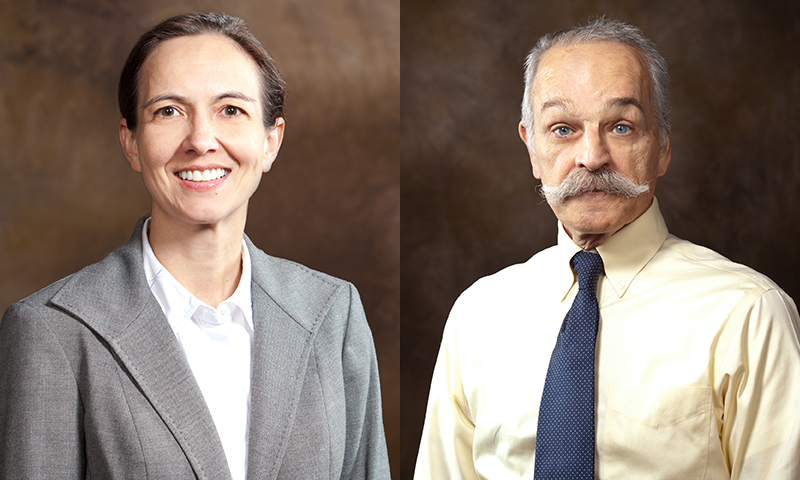
FAYETTEVILLE, Ark. – New research by University of Arkansas biologists suggests that supplementing the numbers of a threatened species with individuals from other locations might not be as effective for some species as previously thought.
The technique, known as translocation, is a valid conservation measure and offers the potential of increasing genetic diversity in small, isolated populations threatened with extinction. Examples of its use include the European adder, bighorn sheep, the Florida panther and the greater prairie chicken in Illinois.
But a recent study of the prairie chicken using modern DNA genotyping indicated a translocation program that took place in the 1990s temporarily increased the populations of birds in two Illinois counties but did not increase overall genetic diversity.
“We can now look back and say they faded again very quickly,” said Michael Douglas, a professor in the Biological Sciences Department. “It really wasn’t a rescue; it was an enhancement.”
Douglas co-authored the study, published in the journal Royal Society Open Science, with his wife Marlis, also a U of A biology professor, and U of A graduate student Steven Mussmann, who was the lead author. Colleagues at the Illinois Natural History Survey and the Illinois Department of Natural Resources were also co-authors.
 Prairie chickens once numbered in the millions in Illinois, but the populations dwindled to just 46 birds by 1998, primarily due to habitat loss. A translocation program in the mid 1990s moved birds from Kansas, where they are not threatened, and was thought to have rescued the Illinois population from harmful effects of low genetic diversity — inbreeding.
Prairie chickens once numbered in the millions in Illinois, but the populations dwindled to just 46 birds by 1998, primarily due to habitat loss. A translocation program in the mid 1990s moved birds from Kansas, where they are not threatened, and was thought to have rescued the Illinois population from harmful effects of low genetic diversity — inbreeding.
U of A biologists extracted DNA from 1,831 shed feathers gathered in six “leks,” or breeding areas, in two Illinois counties. They found little evidence that genetic diversity had improved in the established populations, indicating that many of the translocated birds may not have extensively interbred with the local birds or may have simply wandered off.
“It didn’t have the genetic rescue effect,” said Marlis Douglas. “That doesn’t mean translocations are wrong. They bought time.”
Augmenting habitat suitable for prairie chickens by conserving natural prairie and rehabilitating farmland would help increase population and genetic diversity, she said. “The best way to maintain a genetically diverse population is to increase population size. To do that you need more habitat.”
Funding for the study was provided in part by endowments of the University of Arkansas to Michael E. Douglas, who holds the 21st Century Chair in Global Change Biology; and Marlis R. Douglas, who holds the Bruker Professorship in Life Sciences; along with a grant from the Illinois Department of Natural Resources.
About the University of Arkansas: The University of Arkansas provides an internationally competitive education for undergraduate and graduate students in more than 200 academic programs. The university contributes new knowledge, economic development, basic and applied research, and creative activity while also providing service to academic and professional disciplines. The Carnegie Foundation classifies the University of Arkansas among only 2 percent of universities in America that have the highest level of research activity. U.S. News & World Report ranks the University of Arkansas among its top American public research universities. Founded in 1871, the University of Arkansas comprises 10 colleges and schools and maintains a low student-to-faculty ratio that promotes personal attention and close mentoring.
Topics
Contacts
Michael Douglas, professor
Department of Biological Sciences
479-575-6343, med1@uark.edu
Marlis Douglas, professor
Department of Biological Sciences
479-575-4167, mrd1@uark.edu
Bob Whitby, feature writer
University Relations
479-575-4737,
whitby@uark.edu